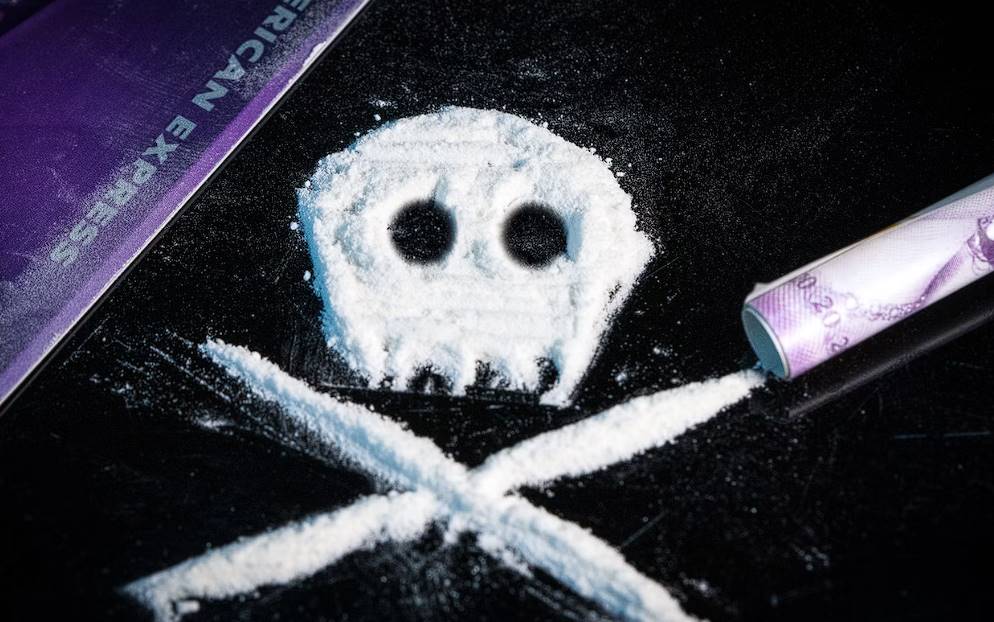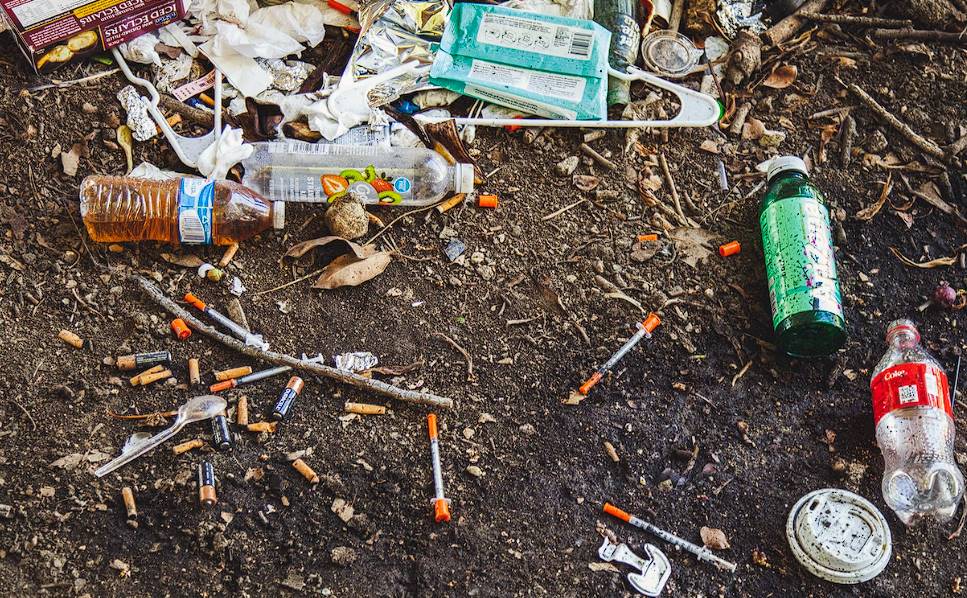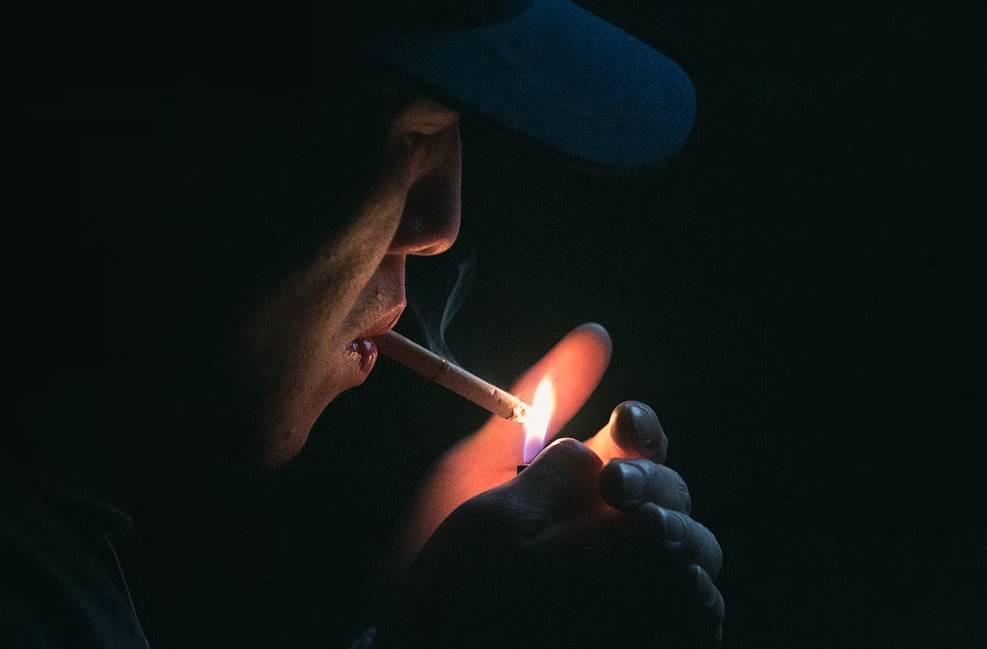Substance abuse and addiction are widespread problems with far-reaching consequences. Knowing the warning signs of drug abuse and addiction can help save lives and prevent further damage by allowing for prompt treatment. This book is an attempt to shed light on the many signs of substance abuse and addiction, from the most obvious to the more subtle.
Informed action towards help-seeking, offering encouragement, and facilitating a road to recovery and healing is made possible by knowing and understanding these warning signs. Working together, we can make our communities safer spaces, where drug abuse and addiction are met with understanding and compassion.
What Is Drug Addiction?
Chronic disease characterised by compulsive drug seeking and use despite negative consequences; this is what we mean when we talk about addiction. Most people who experiment with drugs do so voluntarily; however, chronic drug abuse can cause alterations in brain chemistry that make it difficult for an addict to exercise self-control and fight off drug cravings.
Because of the potential permanence of these alterations to the brain, addiction is often referred to as a "relapsing" disease; those who have successfully treated their substance abuse disorder face a high risk of relapsing even after long periods of abstinence.
Relapse is common, but it doesn't invalidate the effectiveness of treatment. Treatment for this condition should be ongoing and modified according to the patient's response, as is the case with other chronic health conditions. It's important to keep tabs on the patient's progress and make adjustments to the treatment plan as necessary.

What Happens To The Brain When A Person Takes Drugs?
Most drugs trigger euphoria by stimulating the brain's "reward circuit," which is responsible for the release of the neurotransmitter dopamine. A healthy reward system encourages desirable behaviours, like eating and spending time with loved ones, which are essential to survival. Pleasurable but harmful behaviours, such as drug use, are reinforced by spikes of dopamine in the reward circuit, which leads to further repetition of the behaviour.
With repeated drug use, brain cells in the reward circuit become less responsive over time. As a result, the individual experiences a diminished high compared to their initial reaction to the drug. To get the same effect, they may try to take more of the drug. These changes in the brain usually result in a decline in a person's ability to enjoy previously pleasurable activities, such as eating, sexuality, or interacting with others.
Why Do Some People Become Addicted To Drugs While Others Don't?
There is no single factor that can tell us who will or will not develop a drug addiction. Addiction risk is affected by a number of different variables. The likelihood that drug use will result in addiction increases as the number of risk factors increases in an individual. For instance:
Biology.
About half of a person's vulnerability to addiction can be attributed to hereditary factors. Drug abuse and addiction risk may also be affected by a person's gender, race/ethnicity, and the presence of other mental disorders.
Environment.
Family, friends, socioeconomic standing, and the quality of life in general are all factors that contribute to an individual's environment. Peer pressure, physical and sexual abuse, early drug exposure, stress, and parental guidance all play significant roles in determining whether or not a child will develop a substance use disorder.
Development.
Addiction risk is determined by a complex interplay between a person's genes and their environment during formative years. Although drug addiction can occur at any age, it is more likely if drug use begins at a younger age. For teenagers, this is a major issue. Teens may be more likely to engage in risky behaviour, such as drug use, because the parts of their brains that regulate decision-making, judgement, and self-control are still maturing.
Physical Signs Of Drug Abuse
The issue of drug abuse remains a concern in society, and recognizing its subtle signs is crucial for early intervention and support. This article delves into identifying the small physical symptoms and behavioural shifts that may indicate potential substance abuse. By understanding these indicators, friends and family can better assist individuals facing addiction-related challenges.
Physical Indicators of Drug Abuse
Bloodshot Eyes and Pupil Abnormalities:
One of the tell-tale signs of drug abuse is the appearance of red or bloodshot eyes, along with pupils that are either dilated or constricted to pinpoint size. These classic symptoms are often observed in individuals under the influence of drugs or alcohol. Additionally, changes in skin tone and texture, such as puffiness and a washed-out appearance, may also indicate substance abuse.
Unexplained Itchiness and Sleeve Pulling:
Watch out for persistent itchiness in specific body parts or impulsive sleeve pulling, which may be used to conceal scars resulting from drug injections. Such behaviours should not be overlooked, as they might be indicative of underlying health issues related to drug abuse.
Unsteady Speech and Frequent Sniffling:
Substance abuse can lead to unsteady speech patterns and frequent sniffling, both of which can be observed in individuals struggling with addiction. These behavioural shifts, when coupled with increased secrecy or defensiveness, warrant careful attention.
Observing Overall Appearance:
Drastic Weight Changes and Neglected Grooming:
Chronic substance abuse can cause significant fluctuations in body weight due to drugs that suppress appetite or alter body chemistry. Look out for conspicuous weight loss or gain, as well as a lack of interest in personal grooming, which may indicate substance abuse.
Identifying Drug Paraphernalia:
Common Drug-Related Equipment:
The presence of drug paraphernalia can serve as a clear indicator of drug abuse. Among the commonly found items are pipes, cigarette wrapping papers, syringes, cut-up straws, soiled cotton swabs, rolled-up banknotes, lighters, bottle caps or burnt spoons, razor blades, bongs, and surfaces like mirrors or glass used for "cutting."
Other Clues in the Household:
Even when specific equipment is not required for certain drugs, there may still be household items that indicate drug abuse. The presence of a large number of prescription bottles may be indicative of drug misuse..
Identifying the subtle signs of substance abuse is essential for providing timely support to those in need. By paying attention to physical symptoms, behavioural changes, and the presence of drug-related paraphernalia, friends and family can play a crucial role in helping individuals confront and overcome addiction-related challenges. Early intervention can make a significant difference in preventing further harm and facilitating the path to recovery.
Behavioral Changes Associated With Addiction
Irritability
At times, everyone feels anger or frustration. Frustration can even be beneficial in some situations.
But if someone you care about is constantly irritable or easily angered by trivial matters, they may be abusing.
Users of stimulants like cocaine, methamphetamine, or synthetic marijuana can experience rapid shifts in mood, transforming from pleasant and subdued to irrational in a matter of seconds.
Guilt is often the root of the user's newfound rage. They are morally aware and may even desire to stop their bad behaviour. But they can't bring themselves to reach out and ask for assistance.
Obviously, this is no justification. If a family member or close friend becomes physically or verbally abusive, it is important to get away from the situation and call the police if necessary.
Isolation
The most heartbreaking aspect of witnessing someone's decline into addiction is seeing their character unravel before your eyes.
A normal, healthy, outgoing person can be transformed into a recluse who doesn't want to leave the house if they experiment with drugs.
To be clear, social withdrawal is not always indicative of substance abuse. Anxiety and agoraphobia are very different from one another, but they still need to be addressed when a loved one is experiencing them.
However, if you also notice any of the other signs of drug addiction, such as a sudden and long-lasting change in social habits, it may be time to approach them about getting help.
Impulsive Behavior
Addiction alters a person's chemistry in fundamental ways. After using for even a short time, one's entire way of thinking may shift.
One of the most noticeable shifts in behaviour is a greater propensity to seek out dangerous pursuits. To get their next fix, an addict may resort to any means necessary.
Sudden Lying
It seems harmless at first. Your partner starts arriving home later than usual, or they dismiss a question in a way that makes you wonder.
After that, you have no way of knowing what they're telling you is true.
Perhaps the most devastating indicator of addiction is dishonesty. They are a dear and reliable friend or family member. You've probably spent a good number of years growing close to this person.
However, listen to your intuition. Verify your suspicions with further enquiry. Keep tabs on their testimonies and take note if and when there is a discrepancy.
Lack Of Sleep
Substantial brain changes brought on by drug abuse can cause noticeable shifts in behaviour and routine, including how much and how soundly a person sleeps.
It's possible to go without sleep for several days. And this has far-reaching consequences beyond just their level of sleepiness.
Sleep deprivation impacts not only the parts of the brain that are responsible for making decisions, but also the parts of the body, such as raising blood pressure. As a result, they risk injuring themselves or others.
Physical Tics
Tics are a common physical manifestation of drug use. Cocaine is often used as an illustration.
Drug abuse affects more than just brain chemistry, as is evident by the outward manifestations of substance abuse, such as sniffing, snorting, and nasal twitching among chronic cocaine users.
Deteriorating Physical Appearance
Substances have the potential to alter a person's appearance if used for extended periods of time. In fact, if asked to imagine a drug addict right now, most people would probably picture someone with a hollowed out face.
There is truth to the caricature of the drug addict's face.
Substance abuse can cause visible changes to the body, including rashes, bumps, open sores, and sunken eyes, in even the healthiest individuals.

Sudden Weight Loss Or Gain
That's not just limited to outward appearances. Rapid weight gain and loss is a common problem among addicts.
The hypothalamus, which regulates appetite, is overworked, leading to this condition. When high, a person may not feel hungry for days, or they may forget to eat altogether. Somehow, weight loss happens naturally over time.
Financial Problems
A friend of yours approaches you one day and asks for $30, saying they need it for gas and food because their paycheck was smaller than usual. For emotional reasons, you choose to accept their proposal.
The same things occur again two weeks later. A trend becomes apparent to you. Combined with lying, this is a recipe for disaster for a person's long-term financial well-being.
Even the most successful people can go broke supporting a drug habit.
Paranoia
Addicts frequently report a sense of surveillance. Or as if their loved ones are actively plotting against them.
They may act impulsively and destructively, blaming others, because of their heightened anxiety and paranoia.
Conclusion
Abuse of drugs and addiction to them are common problems that have far-reaching effects. Knowing the signs of drug abuse and addiction can save lives and stop more damage by letting people get help right away.
This book tries to explain all of the signs of drug abuse and addiction, from the most obvious to the less obvious ones. When you know these warning signs, you can help people get help, give them hope, and put them on the road to recovery and healing.
Drug addiction is a long-term disease that causes people to want and use drugs even though they know it will hurt them. It can change the way the brain works, making it hard for an addict to control themselves and fight off drug urges. People often say that addiction is a "relapsing" disease, and those who have successfully treated their drug abuse disorder have a high risk of relapsing even after long periods of not using.
The brain's reward circuit is in charge of releasing the drug dopamine, which is important for things like eating and spending time with loved ones. Repeated drug use can make the high less intense than it was at first. This can make it harder for a person to enjoy things that used to make them happy.
There is no one thing that can tell if someone will become addicted to drugs or not. Biological, environmental, and developmental factors all play a role in addiction risk. Peer pressure, physical and sexual abuse, early drug use, stress, and the way parents raise their children all play a big role in whether or not a person will develop a substance use problem.
Some of the physical signs of drug abuse are bloodshot eyes, dilated pupils, strange itching, slurred speech, a runny nose, sudden weight changes, and not taking care of oneself.
Drug tools, like pipes, cigarette papers, syringes, cut straws, dirty cotton swabs, rolled-up bills, lighters, bottle caps, razor blades, bongs, and surfaces like mirrors or glass used for "cutting," can also be signs of drug abuse.
It's important to know the minor signs of drug abuse and addiction so that you can help someone right away and make it easier for them to get better. By paying attention to these signs, friends and family can help people who are struggling with addiction face and beat their problems.
Content Summary
- Substance abuse and addiction have significant consequences in society.
- Recognising warning signs can save lives and enable prompt treatment.
- This book aims to shed light on the signs of substance abuse.
- Understanding warning signs enables informed action and help-seeking.
- Working together can create safer communities with compassion.
- Addiction is characterised by compulsive drug seeking and use.
- Chronic drug abuse alters brain chemistry, leading to self-control issues.
- Addiction is often referred to as a "relapsing" disease.
- Successful treatment doesn't guarantee immunity to relapse.
- Ongoing treatment is necessary, similar to chronic health conditions.
- The reward circuit in the brain is triggered by most drugs.
- Dopamine release reinforces pleasurable but harmful behaviours.
- Repeated drug use reduces brain cell responsiveness.
- Diminished highs lead individuals to take more drugs.
- Addiction can diminish the ability to enjoy other pleasurable activities.
- Addiction risk is influenced by multiple factors.
- Hereditary factors play a significant role in addiction vulnerability.
- Environment, peers, and parental guidance influence addiction risk.
- Early drug use can increase the likelihood of addiction.
- Teens may be more susceptible to drug use due to brain development.
- Recognising physical signs is crucial for early intervention.
- Bloodshot eyes and pupil abnormalities can indicate drug use.
- Unexplained itchiness and sleeve pulling may conceal drug injection scars.
- Unsteady speech and frequent sniffing can be linked to substance abuse.
- Drastic weight changes and neglected grooming may point to drug abuse.
- Drug paraphernalia is a clear indicator of drug abuse.
- Common drug-related equipment includes pipes and syringes.
- Household items like prescription bottles may also indicate drug misuse.
- Identifying subtle signs is crucial for timely support.
- Paying attention to physical symptoms is important.
- Observing behavioural changes can reveal potential substance abuse.
- The presence of drug paraphernalia should not be ignored.
- Friends and family play a crucial role in supporting individuals with addiction.
- Early intervention can prevent further harm and aid recovery.
- Understanding warning signs empowers individuals to seek help.
- Knowing the signs can facilitate a road to healing.
- Addiction is a complex and chronic disease.
- Brain alterations make self-control challenging for addicts.
- Treatment plans should be adjusted according to the patient's response.
- Dopamine release reinforces addictive behaviours.
- Environmental factors influence addiction risk.
- Peer pressure and early drug exposure can contribute to addiction.
- Teens may be more prone to risky behaviour due to brain maturation.
- Physical indicators provide clues about substance abuse.
- Bloodshot eyes and pupil abnormalities are tell-tale signs.
- Unexplained itchiness and sleeve pulling may indicate drug injection.
- Unsteady speech and sniffing can be signs of substance abuse.
- Drastic weight changes and neglected grooming may be linked to drugs.
- Drug paraphernalia can reveal drug abuse.
- Recognising signs and seeking support can make a difference in recovery.
Frequently Asked Questions
Drug abuse refers to the misuse of drugs, either illicit substances or prescription medications, in a way that can be harmful to one's health and well-being. It involves using drugs beyond recommended doses or for non-medical purposes. On the other hand, drug addiction, also known as substance dependence, is a chronic condition characterized by compulsive drug-seeking behavior and an inability to stop using drugs despite negative consequences. While drug abuse can lead to addiction, not all drug abusers become addicted.
Signs of drug abuse can vary depending on the substance used, but common indicators include changes in behavior, sudden mood swings, neglecting responsibilities, declining performance at work or school, secretive behavior, and withdrawing from social activities. Physical signs may include changes in appearance, weight fluctuations, and unexplained health issues.
Recognizing signs of drug addiction may involve observing behavioral changes, such as extreme mood swings, isolation from loved ones, financial difficulties, and engaging in risky behaviors. Physically, you may notice withdrawal symptoms when the person stops using the drug, increased tolerance, and a strong desire to continue using despite adverse consequences.
Psychological symptoms of drug addiction can include anxiety, depression, paranoia, impaired memory and concentration, and persistent cravings for the drug. The individual may also experience mood swings and difficulty in managing emotions.
Yes, drug addiction can lead to legal and financial problems. As individuals struggling with addiction prioritize obtaining and using drugs, they may engage in illegal activities, such as theft or drug trafficking, to support their habit. This behavior can result in legal consequences and financial difficulties due to the cost of acquiring drugs.




















